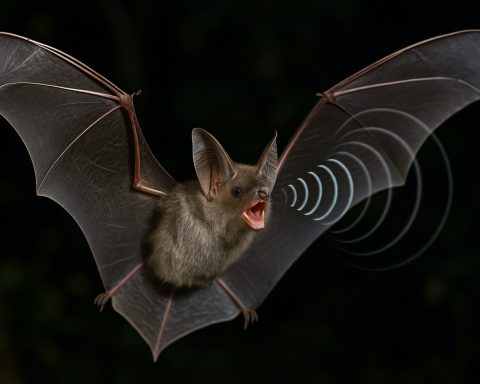- The U.S. has approved a $5.5 billion sale of 20 F-16 fighter jets to the Philippines, enhancing their defense capabilities and alliance amidst South China Sea tensions.
- The F-16 acquisition strengthens the Philippines’ position to monitor maritime areas and counter air threats, asserting its sovereignty against China’s claims.
- Joint exercises, like “Cope Thunder” at Basa Air Base, mark a shift in regional power dynamics, showcasing the capabilities of the F-16s.
- The U.S. policy under President Trump focuses on countering China in Asia, redirecting military attention from Europe to the Indo-Pacific region.
- Statements from U.S. defense leaders affirm support for the Philippines, highlighting a robust defense partnership in the region.
- The Philippines’ upgraded airpower symbolizes strengthened partnerships and a joint vision for peace and stability in Southeast Asia.
Amid the swirling geopolitical tensions in the vast canvas of Southeast Asia, the skies over the Philippines are set for a strategic renaissance. The United States has officially endorsed a monumental $5.5 billion sale, empowering the archipelago nation with 20 advanced F-16 fighter jets. This decision, announced by the US State Department, fortifies a longstanding alliance as the Philippines and China brace for heightened standoffs in the contentious South China Sea.
The Stage: At Basa Air Base in Pampanga, the roar of jet engines heralds a new era. The joint “Cope Thunder” exercises showcase the might and agility of the F-16s, underlining a palpable shift in regional power dynamics. These fighter jets, swift as falcons and laden with cutting-edge technology, represent not just raw power but a promise of intervention, an aerial shield against instability.
A Geopolitical Chess Game: Rising tensions with China cast long shadows across Southeast Asia. Beijing’s unwavering claim over nearly the entire South China Sea has been met with international scrutiny and declared baseless by global courts. Against this backdrop, the acquisition of F-16s amplifies the Philippines’ ability to monitor maritime domains and suppress adversarial air defenses. It signifies a decisive pivot towards enhancing its defense capabilities and asserting sovereignty.
A Realigned Focus: Under President Donald Trump’s administration, a recalibrated military posture has emerged, redirecting US focus towards Asia. This strategic shift counters China’s ascendancy, especially regarding Taiwan, while recalibrating traditional US commitments away from Europe. In this broad tapestry of military strategy, the sale to the Philippines stands out, promising stability, peace, and the fortification of an assertive ally.
A Resounding Commitment: US Defense Secretary Pete Hegseth recently emphasized a renewed commitment to counterbalance the Chinese threat, signaling a robust defense partnership in the Indo-Pacific region. Meanwhile, Secretary of State Marco Rubio reaffirmed the US’s unwavering support for the Philippines, a stark contrast to previous administrations that critiqued allied nations for not contributing enough to collective defense efforts.
The Vision Ahead: As the Philippines takes possession of these formidable jets, their presence symbolizes more than military enhancement. It’s about reaffirming partnerships, bolstering stability, and a shared vision of peace in a region fraught with historical tensions. For the Philippines, the skies may be less daunting, with new metallic guardians soaring above, ready to defend the sovereignty and progress of a nation at a crucial crossroads.
In a world where every alliance counts and every strategic move is consequential, the Philippines’ upgraded airpower is a testament to enduring partnerships and shared futures. The message is clear—the skies over Southeast Asia are now under vigilant watch, with the promise of freedom and resilience echoing through the clouds.
The Bold Move of Empowering the Philippines: What the $5.5 Billion F-16 Sale Means for Southeast Asia
Key Insights into US-Philippines Military Relations and Strategic Implications
The recent approval of a $5.5 billion deal by the United States to supply the Philippines with 20 advanced F-16 fighter jets is a monumental event in both military and geopolitical arenas. This sale, announced by the US State Department, could significantly alter the balance of power in Southeast Asia, offering the Philippines a newfound strategic advantage in the contentious South China Sea.
Overview of the F-16 Fighter Jets
The F-16 Fighting Falcon is renowned for its versatility, agility, and advanced avionics. Capable of reaching speeds over Mach 2, these jets are equipped for a variety of missions ranging from air combat to ground attacks.
– Specifications: The aircraft is fitted with a sophisticated radar system that provides superior situational awareness and targeting.
– Armament Capabilities: The jets can carry an array of weaponry, including air-to-air missiles, precision-guided bombs, and electronic warfare systems.
– Cost and Maintenance: Maintenance of these sophisticated warriors requires a robust supply chain and technical expertise, both of which are crucial considerations for the Philippines moving forward.
Real-World Use Cases & Strategic Importance
– Maritime Security: With these jets, the Philippines can enhance its maritime domain awareness and effectively monitor its adjacent waters, especially in disputed areas within the South China Sea.
– Deterrence Capability: The presence of advanced fighter jets serves as a significant deterrence against potential adversarial actions, reinforcing the defense posture in one of the most strategically volatile regions.
Market Forecasts & Industry Trends
The defense aircraft market is expected to see substantial growth as geopolitical tensions rise globally. Companies manufacturing advanced fighter jets, like Lockheed Martin with the F-16, are poised to benefit from increased purchases by nations bolstering their defense capabilities.
Reviews & Comparisons: Why the F-16?
– Competitive Alternatives: The F-16 competes with other acclaimed aircraft like the Eurofighter Typhoon and Dassault Rafale. However, the F-16’s established track record and continuous upgrades make it a preferred choice for many air forces globally.
– Affordability and Upgradability: Despite its high purchase price, the F-16 offers cost-effective operation and upgrading pathways compared to newer-generation fighters.
Controversies & Limitations
– Political Implications: The acquisition has not been without controversy, as it may provoke tension with China and alter the regional strategic landscape.
– Infrastructure Requirements: The introduction of these jets necessitates substantial investment in airbase infrastructure and pilot training programs.
Pros & Cons Overview
Pros:
– Enhanced security and air superiority.
– Strengthened ties with the United States.
– Improved intelligence and reconnaissance abilities.
Cons:
– High maintenance and operational costs.
– Potential for increased geopolitical tensions.
Insights & Predictions
As the Philippines bolsters its defense framework, expect an intensification of military diplomacy, not just with the US, but also with other Indo-Pacific nations seeking alliances against regional threats. This deal underlines a broader trend of strategic engagement in Asia, with implications for global peace and security.
Actionable Recommendations
1. Invest in Training: Prioritize the training of pilots and maintenance crews to maximize the operational efficiency of the new jets.
2. Upgrade Infrastructure: Ensure that airbase facilities are modernized to accommodate advanced aircraft technology and operations.
3. Strategic Alliances: Strengthen diplomatic relationships with neighboring countries to form a cohesive security network in the region.
Related Links
Visit the Lockheed Martin homepage for more information about the F-16 Fighting Falcon and related defense technology.
By incorporating the F-16s into its arsenal, the Philippines could lay the foundation for formidable air superiority in Southeast Asia, heralding a new era of strategic resilience.







